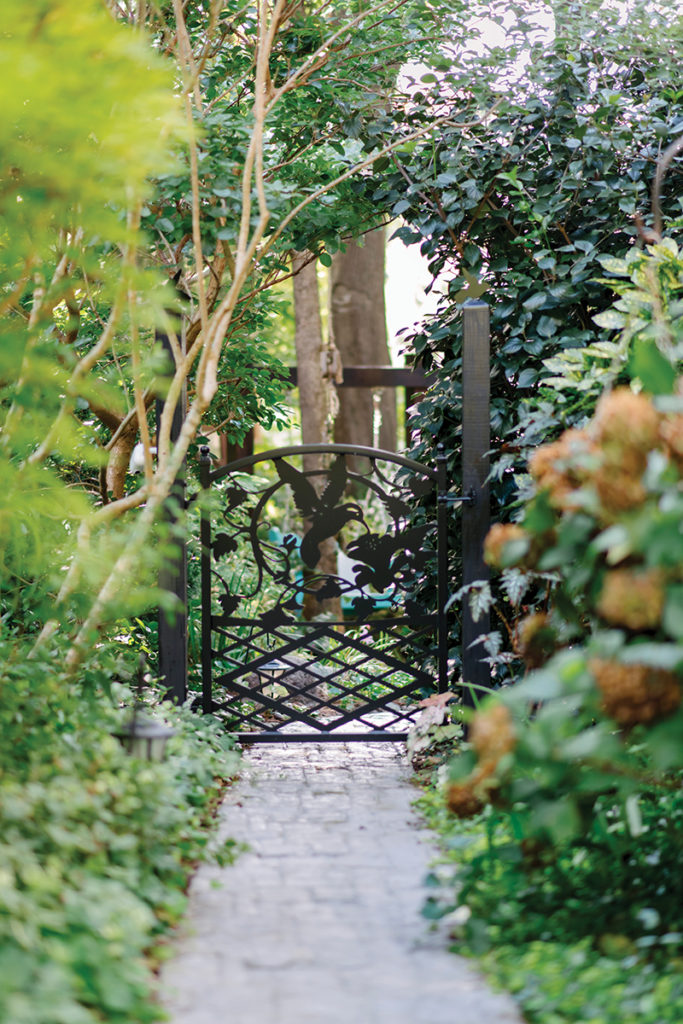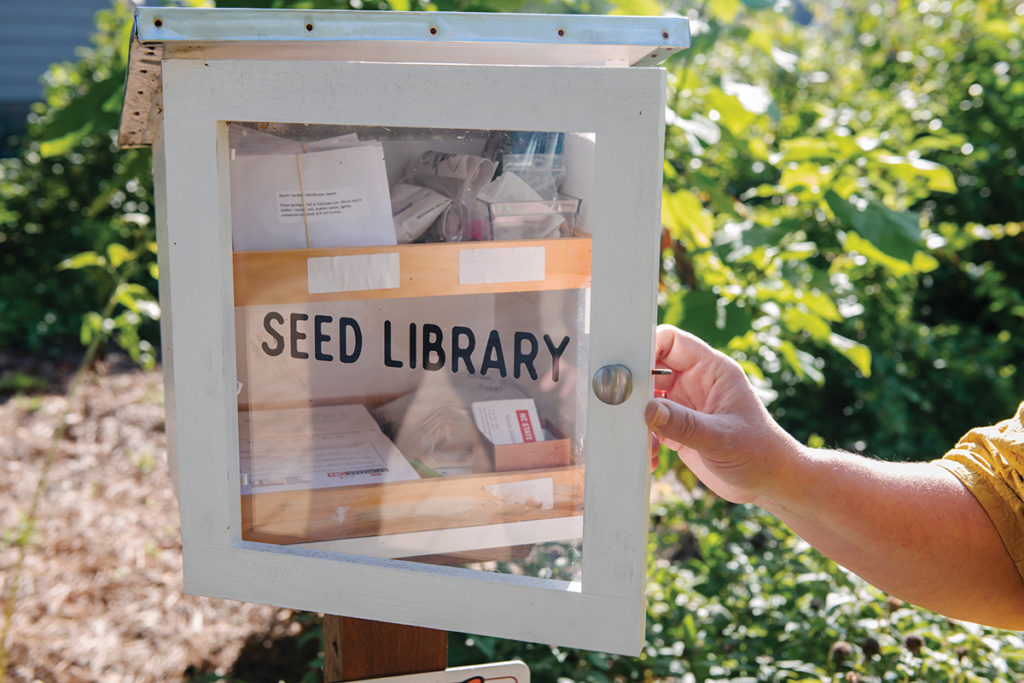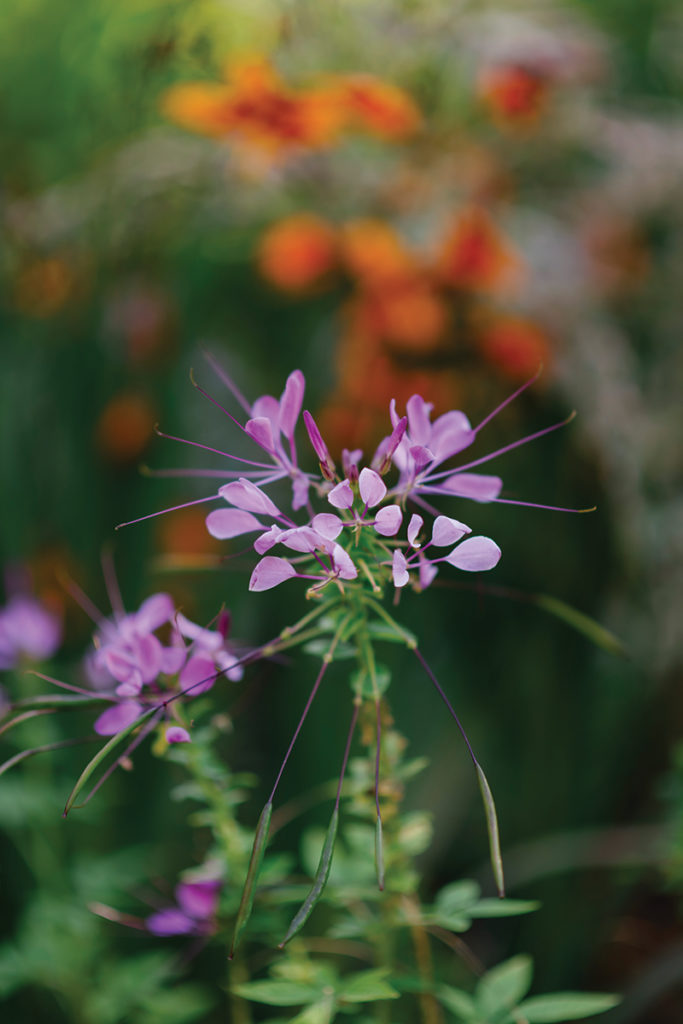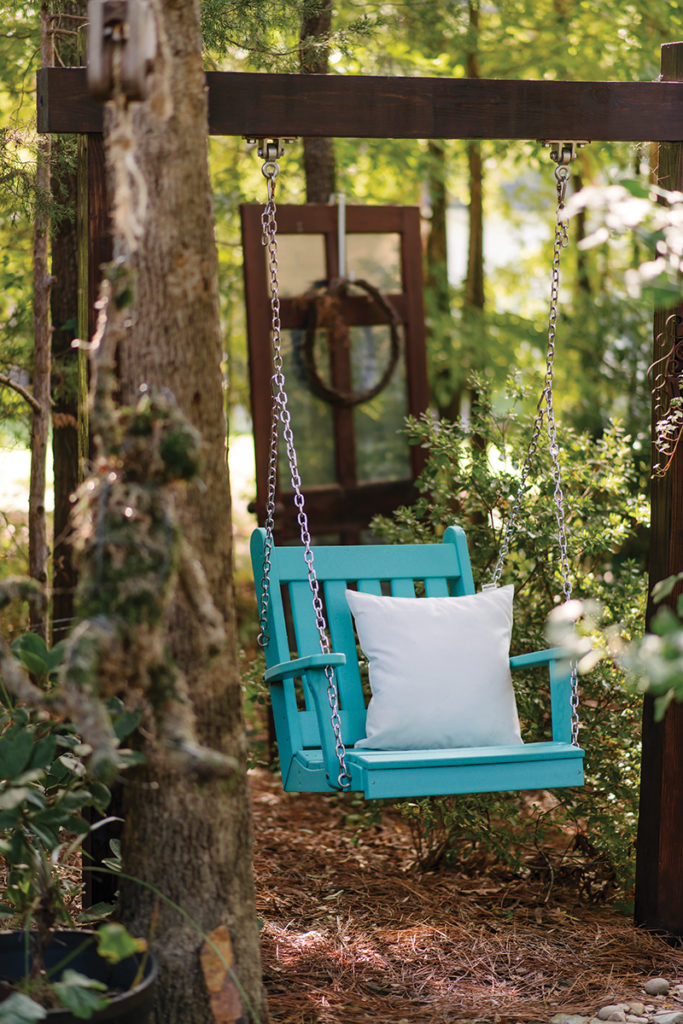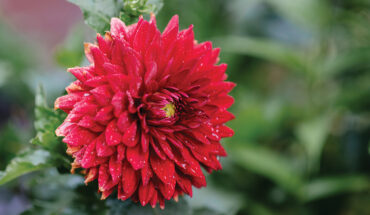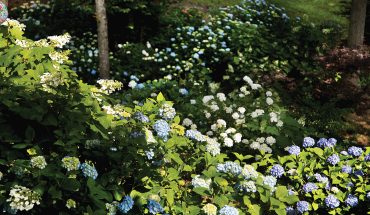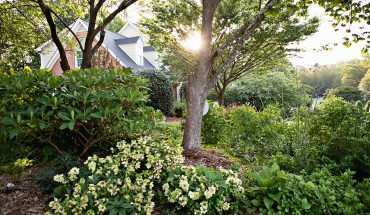Karen Stratton-Guy and her husband David Guy nurture their own yard and their neighborhood garden, too, with a unique seed share library.
by Helen Yoest | Photography by Liz Condo
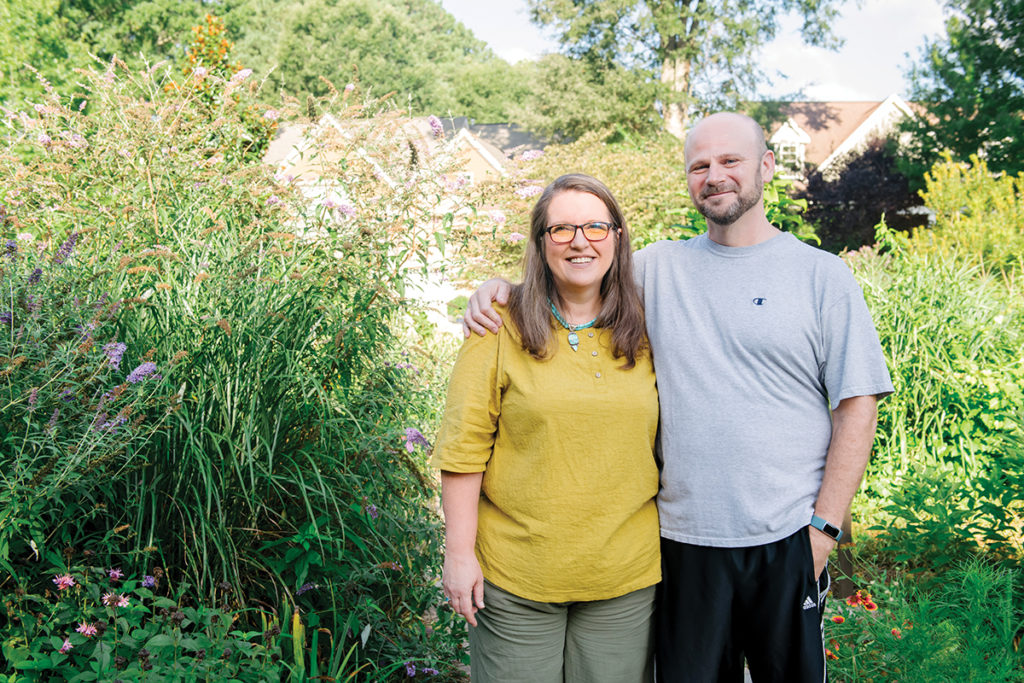
Within the charming neighborhood of Majestic Oaks in Wake Forest, you’ll meet an equally charming couple, Karen Stratton-Guy and her husband, David Guy. They share a love of gardening and creating. Within their quarter-acre lot, they’ve spent a dozen years developing a sanctuary with several “rooms,” where one can wander about and enjoy different spaces. Their sunny front yard is full of pollinator plants that welcome various butterfly and bee species; the back garden is a shady oasis with a fireplace as its cozy centerpiece. “It’s a space for relaxing, gathering with family and friends and just the joy of gardening,” says Karen. “In spring, when the trees leaf out, you don’t see any of the neighboring houses, and all you hear is the sound of the fountain, birdsong and frogs. It’s all so blissful.” Walking through the garden, you’ll find many trees, the largest of which are native oaks of various species, including willow oak and white oak. Under their broad canopy are a variety of understory trees, both native and introduced. “We have a native bald cypress, dogwood, redbud, river birch, sweet gum and a wax myrtle,” says Karen. She and David have also added Japanese maples, crepe myrtle, arborvitae, ginkgo, flowering cherry and mulberry for more diversity.
As every gardener knows, a garden is never finished — the couple fights a constant battle with invasive plants like English ivy, Japanese honeysuckle and the tree of heaven. “Because we have lots of wildlife dropping seed, it’s a process, and we always prioritize what needs to be removed first,” says Karen.
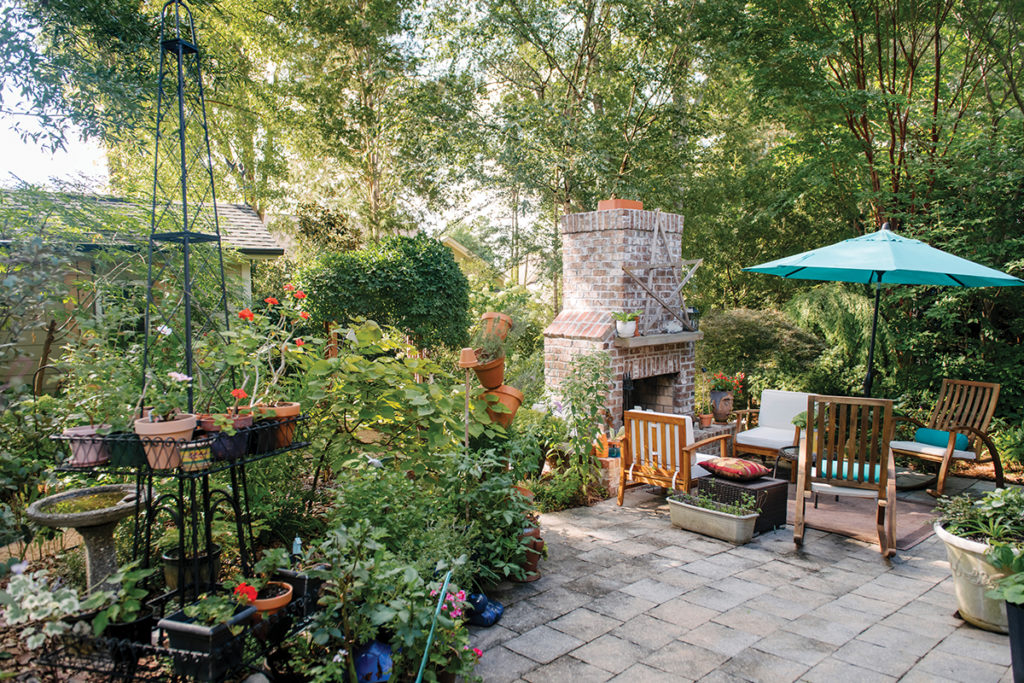
Their gardening practice extends beyond their garden: They’ve become de facto caretakers for a natural area next door. When the neighborhood was developed, this 0.29-acre plot was designated as a Tree-Save Lot. Sadly, the trees were not protected as directed, and severed roots from construction affected the tree’s health. “We had arborists evaluate the trees regularly, but one by one, three large willow oaks failed,” Karen says. “There is now one remaining white oak tree.”
After construction, the developer turned the lot over to the homeowners, who decided to turn the area into a community garden. Along with their neighbors, the couple has planted new oak trees, including Overcup oaks, and they are doing well.
The lot is mostly sunny, and the garden areas continue expanding. From the first daffodil bulbs planted in 2010, the Guys sowed seeds and brought divisions from their garden. Since then, it has been a gradual process of planting and hardscaping. “We created a path and a patio with mulch and salvaged stone at first,” Karen says. “Today, we have a brick-paved path and patio, two benches and a picnic table, and those original salvaged stones have been repurposed as an edge along the sidewalk to hold back the mulch.” Karen also hired a local carpenter to build a seed library, a box much like the popular book-lending libraries, but with seeds to take or leave instead.
Today, the lovingly nurtured garden is actively engaged by neighbors young and old. As you walk the path, you will find a dozen or so pretty painted rocks; these rocks move around, and new ones randomly appear — evidence that tiny hands have been working in the earth, and enjoying the greenery. “Neighbors have told me they enjoy visiting with their children or grandchildren,” says Karen. “I’ve overheard many children excited about the butterflies.”
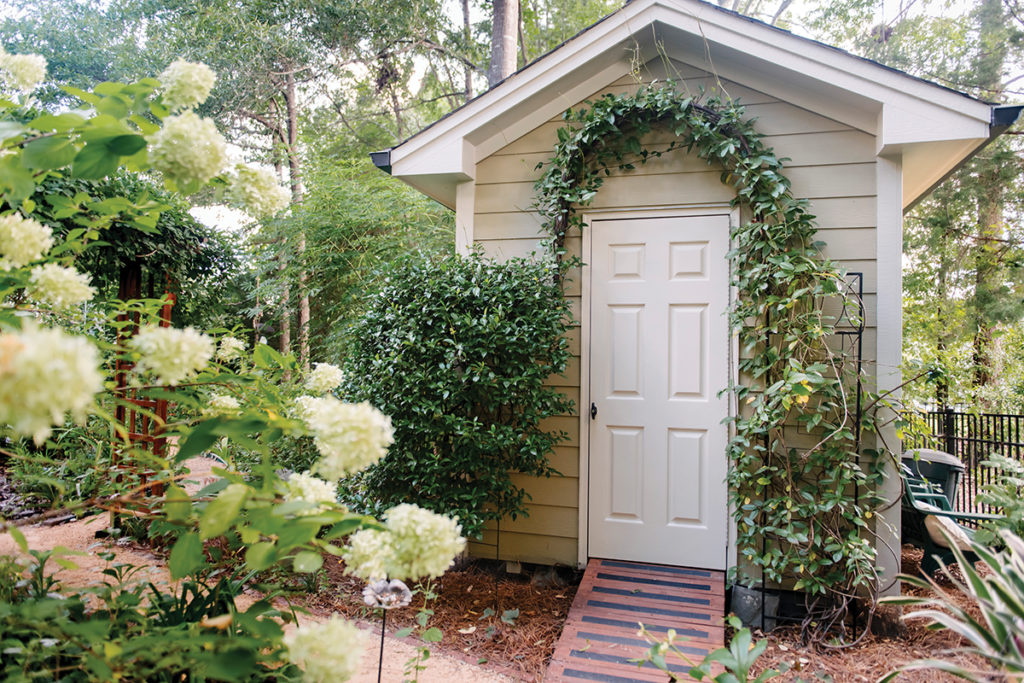
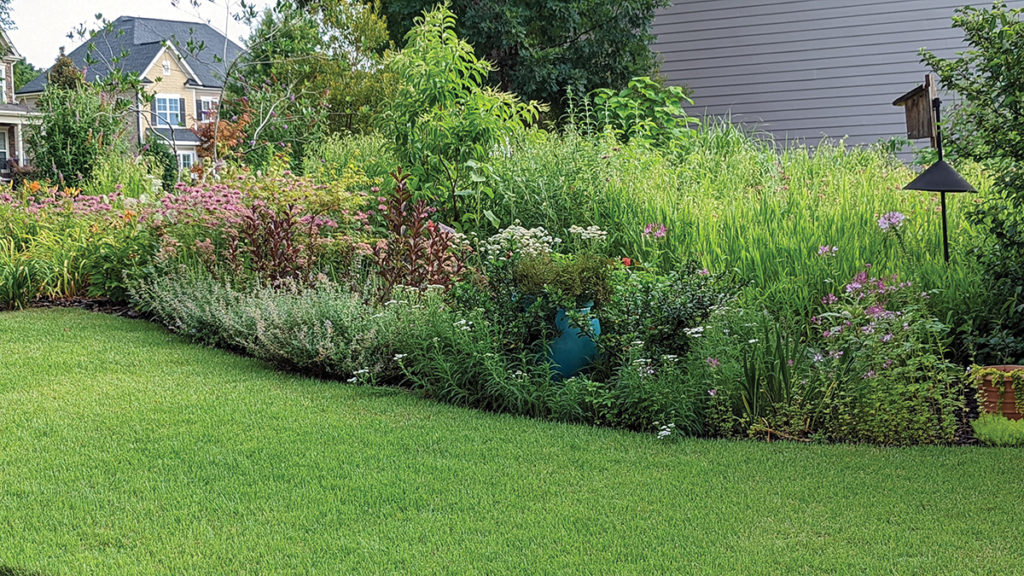
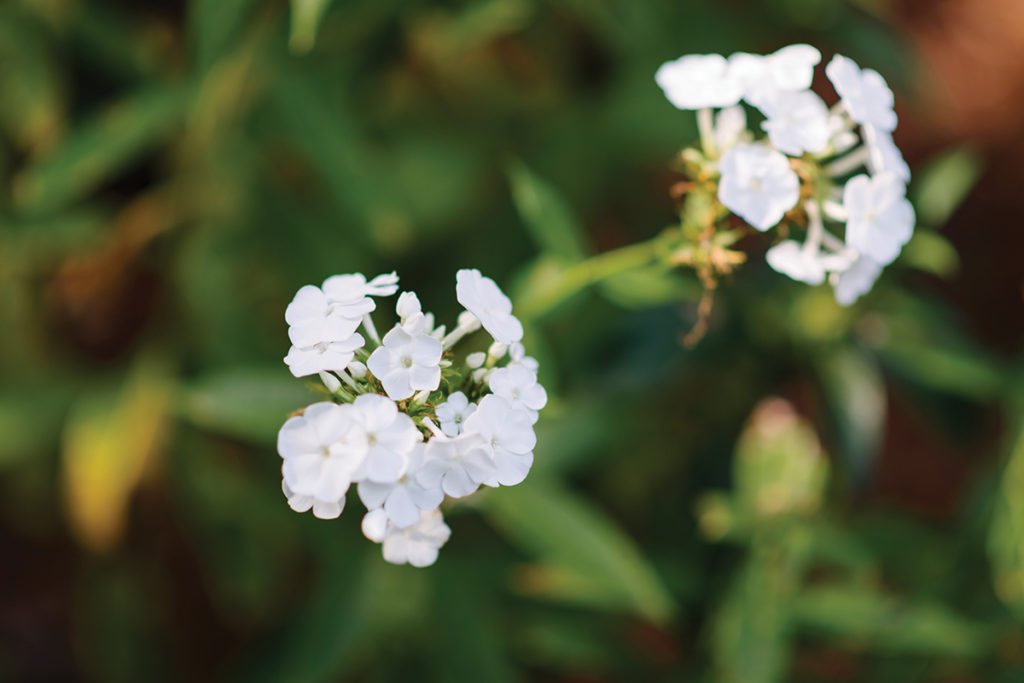
This article originally appeared in the October 2022 issue of WALTER magazine.

